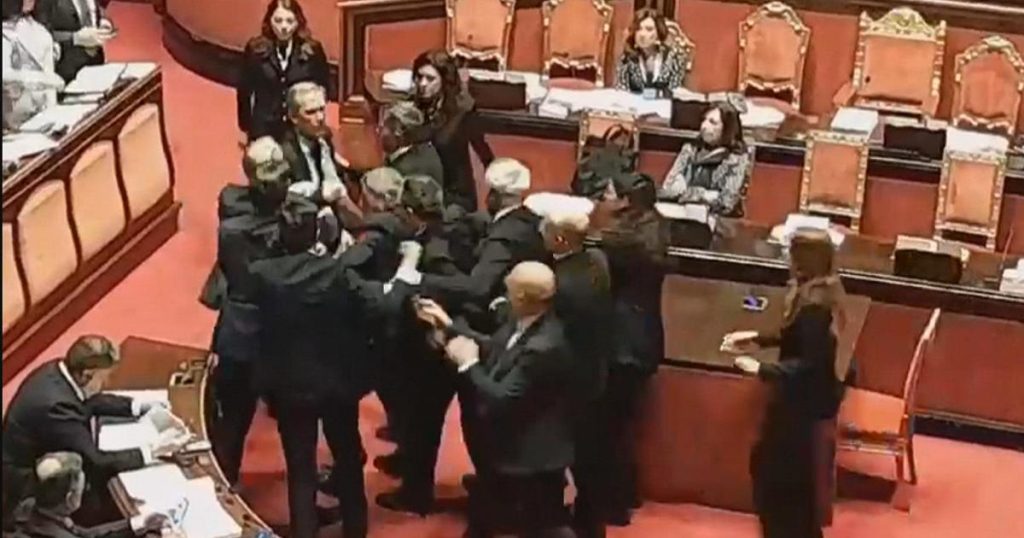At the Senate, the approval of articles 3 and 4 of the Casellati draft law was met with heated discussions and opposition from minority parties who were unhappy with the limited time allocated for debate. The comparison was made with the contentious discussions that took place during the Boschi-Renzi reform. The number of sessions dedicated to the premierate draft law was less than half of those dedicated to the Boschi-Renzi reform in 2014, as highlighted by Peppe de Cristofaro. The majority defended the implementation of these measures as part of their electoral program, and successfully passed the fourth article of the premierate. Tensions rose in the Senate, with harsh comments from Ettore Licheri of the m5s and accusations of insults towards opposition senators leading to a physical confrontation.
Following the altercation, President Ignazio La Russa appointed three senators to conduct an inquiry for potential sanctions against those involved in the scuffle. Meanwhile, the majority continued to clash with the minority over responsibilities. Despite the protests and symbolic gestures, the majority managed to pass the third and fourth articles of the Casellati draft law out of eight. These articles focused on simple modifications such as allowing the dissolution of the chambers when the elected prime minister is ousted or resigns and abolishing the requirement of government counter-signature for certain presidential acts to ensure independence. The remaining four articles faced over 2,000 amendments.
Critics of the premierate reform, such as Carlo Calenda of Azione, labeled it as unnecessary and argued that if no other country has it, there should be a reconsideration. However, supporters like Raffaele Nevi from Forza Italia argued that the reform has been supported since 1994 with the aim of improving citizens’ recognition of the government’s actions and strengthening the role of the premier. Despite the opposition’s strong resistance, the majority was able to push through some of the simpler articles of the draft law. The heated debates and physical confrontations in the Senate reflected the deep division between the majority and minority parties over the proposed reforms.
The discussions in the Senate over the Casellati draft law were reminiscent of the contentious debates surrounding the Boschi-Renzi reform, with both sides passionately defending their positions. While the majority claimed that the draft law was part of their electoral mandate and necessary for effective governance, the opposition criticized the limited debate time and questioned the need for some of the proposed changes. The physical confrontation that broke out in the Senate highlighted the intense emotions surrounding the issue, prompting an inquiry into the incident and renewed clashes between the center-right and center-left factions.
In conclusion, the Senate’s approval of articles 3 and 4 of the Casellati draft law marked a significant step in the legislative process, despite the chaotic and confrontational atmosphere that prevailed during the debates. The government’s determination to see the reform through and the opposition’s fierce resistance underscored the deep political divide in the country. The reforms aimed to streamline the governance process and make the presidency more independent, but faced strong opposition from critics who viewed them as unnecessary or detrimental. The ongoing debates and clashes in the Senate reflected the complexities of Italian politics and the challenges of passing major legislative changes in a polarized environment.


